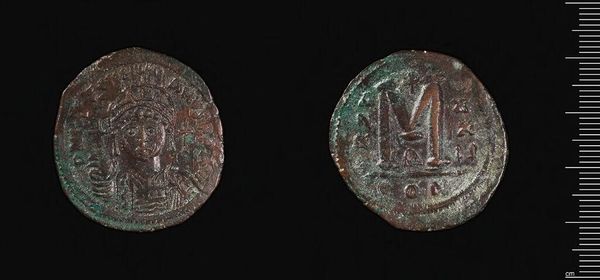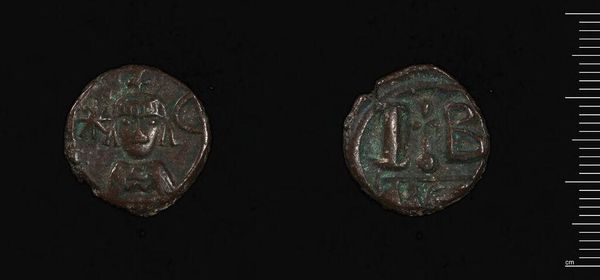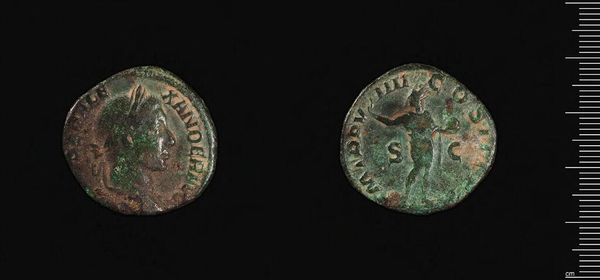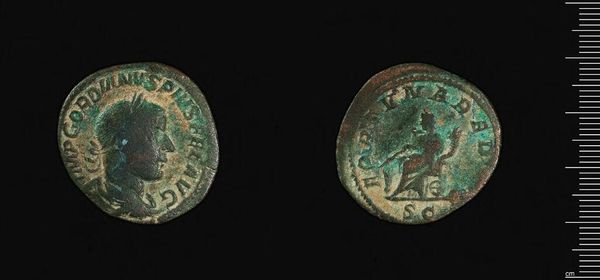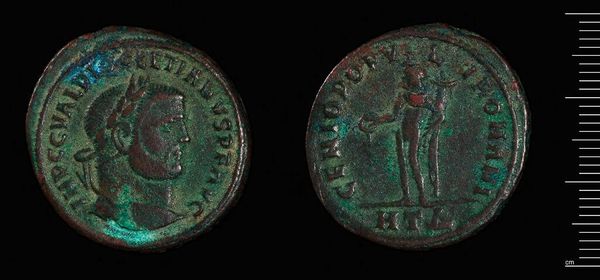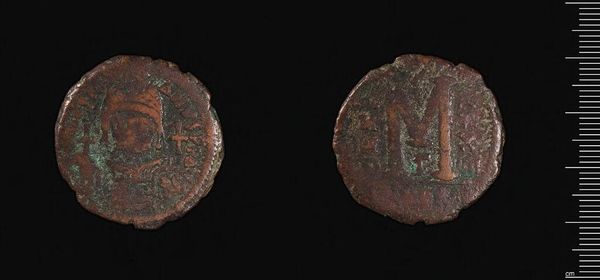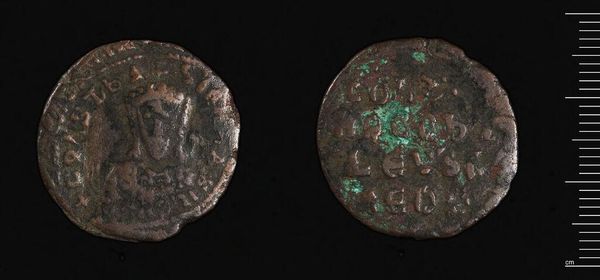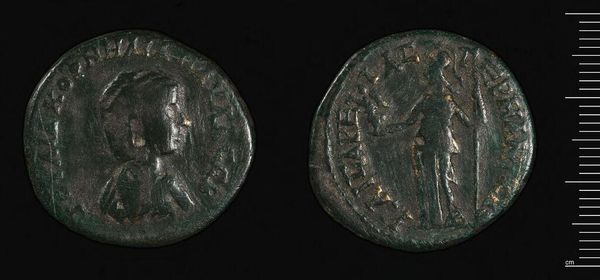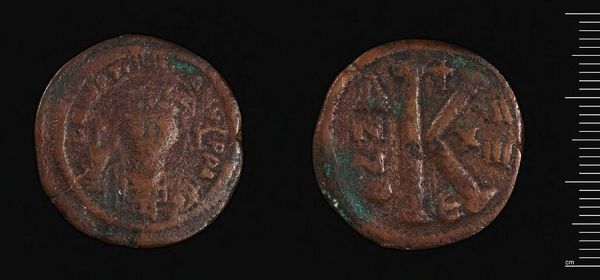
Dimensions: 8.57 g
Copyright: CC0 1.0
Curator: Here we have a Follis of Anastasios I, a Byzantine bronze coin, currently residing at the Harvard Art Museums. Editor: The coin’s aged patina immediately strikes me. It speaks volumes about its journey through time and the hands it has passed through. Curator: Indeed. Its materiality tells a story of imperial administration. Each coin was a direct product of labor, from mining the raw materials to striking the image of the emperor. Editor: And that image! Placed in circulation, it's a potent symbol of power, isn't it? A reminder of the emperor's reach and authority, intertwined with the everyday lives of people of all identities. Curator: Absolutely. By studying the coin's wear and its presence in archaeological finds, we can reconstruct trade routes, economic activity, and even social hierarchies. Editor: It's fascinating how an object so small can illuminate such grand narratives. I leave with a deeper appreciation for the intersections of power, labor, and daily life in Byzantium. Curator: A fitting reminder of the tangible links between material culture and the shaping of history.
Comments
No comments
Be the first to comment and join the conversation on the ultimate creative platform.
